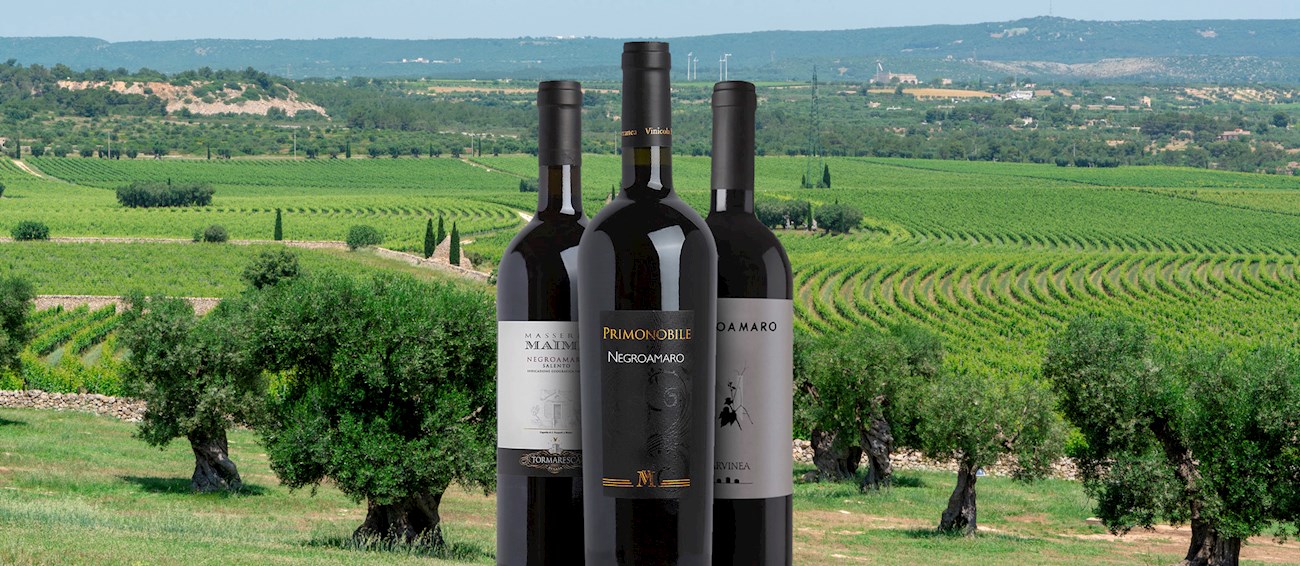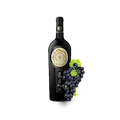Best Apulian Fruit Types
Primitivo is an Italian grape variety with quite interesting origins. Research conducted in 1994 proved that the grape is identical to Californian Zinfandel, while it was later discovered that both grapes originated from an old and obscure Croatian grape Crljenak Kaštelanski.
Despite the same lineage, these grapes are influenced by their terroir, and they can slightly differ in character. In Italy, Primitivo is mostly cultivated in Apulia, where it is used in the appellation Primitivo di Manduria. Primitivo is a somewhat rustic wine, dark, intense, and rich in tannins that tend to mellow with age.
VARIATIONS OF Primitivo
Negroamaro is a red grape variety mostly found throughout Apulia, particularly in Salento, Lecce, Tarento, Brindisi, and Foggia. It is often used together with other regional grapes such as Malvasia Nera, Susumaniello, and Primitivo, although it also has excellent potential as a varietal wine.
Negroamaro has a somewhat rustic character with fruity and earthy nuances reminiscent of red and dark berries. With age, these dark-colored wines will typically develop herbaceous and spicy notes. Most examples have a medium to full body and typically high alcohol content.
Mostly cultivated in Campania, Fiano is an old Italian variety that has seen a significant revival since the 1980s. This low-yielding, early-ripening grape is praised for its ability to produce crisp and aromatic wines with a lot of character and herbaceous and fruity notes.
These wines are typically medium-bodied and intensely flavored. Young Fiano wines often display aromatic honey notes, and as they age, they tend to develop smoky and spicy notes dominated by hazelnut. The aromas are perfectly balanced with bright acidity.
VARIATIONS OF Fiano
The smallest members of the mandarin family first introduced to the region of Apulia in the 18th century, these fragrant clementines are grown off the coast of Taranto where they flourish in the warm, sunny Mediterranean climate. Clementine del Golfo dì Taranto refers to the fruits of the following cultivars: Comune, Fedele, Precoce di Massacra (Spinoso) and Grosso Puglia.
Grown without cross-pollination, Taranto clementines are seedless and easily distinguished by a slightly flattened shape, deep orange-colored skin, an intense and long-lasting aroma and a particularly sweet flavor. These refreshing and juicy clementines have a high content of vitamin C and, when not enjoyed fresh, they are used to prepare juices, syrups, sorbets, and marmalades.
Albicocca di Galàtone is a very small but particularly sweet and juicy variety of apricots grown mainly around the city of Galàtone, although it can also be found around the cities of Nardò, Seclì, and Sannicola in the province of Lecce.
Due to their tenderness, they are not produced on a large scale, which is why they are very hard to find on the market. Of course, they are available locally, and the best way to enjoy them is to eat them fresh, preferably not long after they have been harvested from the tree.
The designation of Uva di Puglia refers to table grapes of the following varietals: Italia, Regina, Victoria, Michele Palieri and Red Globe. These grapes are cultivated throughout the region of Apulia at an altitude of 330m above sea level where they thrive due to the favorable Mediterranean climate and pedoclimatic conditions.
All Apulian grapes are particularly juicy and sweet; they have a firm, crunchy flesh and stand out for their long shelf-life, while their color varies depending on the variety: Italia, Regina and Victoria are straw yellow, Red Globe has an intense rosé doré color, whereas Michele Palieri grapes are dark purple, almost black.
Nero di Troia, also known as Uva di Troia, is an ancient Apulian grape primarily cultivated in northern Apulia. It most likely originates from the town of Troia in the province of Foggia. Although it was often overshadowed by the more popular Primitivo and Negroamaro, this late-ripening grape has shown great potential to produce well-structured, tannic wines with a distinctive character.
The grape is used in varietals and blends, several regional DOC appellations, and Castel del Monte Nero di Troia Riserva DOCG. It is often combined with Primitivo, Negroamaro, or Montepulciano. Blending grapes tend to tone down the tannins, but varietal Nero di Troia can result in excellent wines.
VARIATIONS OF Nero di Troia
Susumaniello is an Italian red grape synonymous with Apulia. It is a rare grape and one of many offspring of Garganega. Susumaniello is mainly cultivated in Brindisi, where it is usually used in blends, together with Malvasia Nera and Negroamaro, but it also shows good varietal potential.
This red-skinned grape is suitable for various styles, but it is mainly vinified into dry red wines. Most examples are soft and fruity, dominated by plum and cherry aromas. They are deeply colored, medium-bodied, and pleasantly tannic wines that can age well.
These fragrant oranges originate from the Gargano peninsula in Apulia, the only citrus producing region on the Italian Adriatic coast. Famous for its picturesque landscapes of orange and lemon groves, the area between the towns of Rodi, Ischitella, and Vico del Gargano is called 'Il triangolo giallo-arancio' (the yellow-orange triangle) and has an agricultural tradition dating back to the ancient times.
The sweet Gargano oranges are cultivated in two varieties, Duretta and Biondo, both of which are characterized by a long shelf life. In fact, since they remain firm and juicy weeks after harvesting, Gargano oranges used to be one of the most popular Italian fruits for transatlantic export.
Malvasia Nera di Brindisi is a red grape mostly grown in Apulia. It is used in the production of red and rosé wines, and it is the most common variety of dark-skinned Malvasia. The grape has many synonyms, and recently it was confirmed to be identical to Malvasia Nera di Lecce.
It typically produces ruby red wines with well-structured tannins, well-balanced acidity, and fruity notes reminiscent of pomegranate and raspberry. Malvasia Nera was predominantly used as a blending grape, typically together with Negroamaro, but it also has excellent potential as a varietal wine.
TasteAtlas food rankings are based on the ratings of the TasteAtlas audience, with a series of mechanisms that recognize real users and that ignore bot, nationalist or local patriotic ratings, and give additional value to the ratings of users that the system recognizes as knowledgeable. TasteAtlas Rankings should not be seen as the final global conclusion about food. Their purpose is to promote excellent local foods, instill pride in traditional dishes, and arouse curiosity about dishes you haven’t tried.








